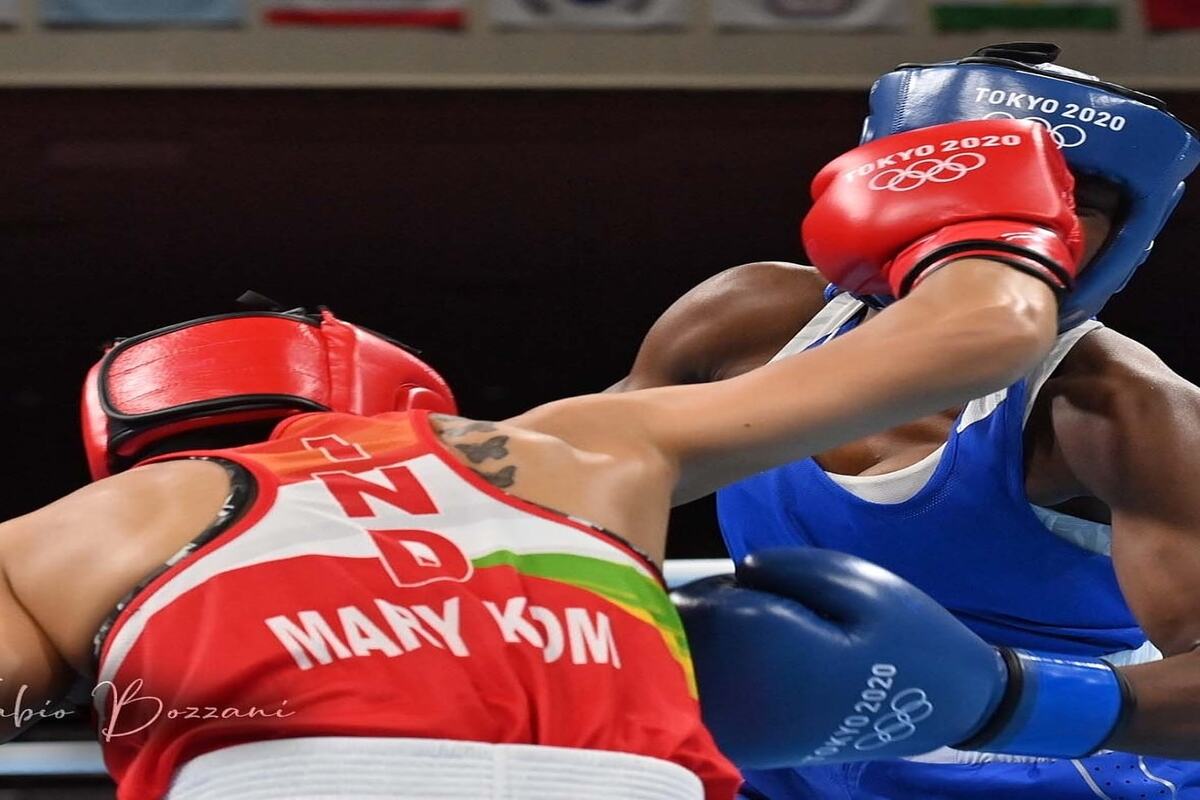“Being a girl, fighting for 20 years is not an easy job.” Mary Kom’s words to Olympic Channel from a qualifying event in Jordan last year convey a lot, especially in terms of longevity.
It has been 21 years since Mary appeared first at the national boxing championships in 2000. In all these years, the world has changed big time, thanks to the internet boom, social media overdose and phones becoming smart. But Mary, now a veteran, is showing no signs of hanging up her gloves.
Advertisement
In her first match at the Tokyo Olympics, where she defeated Dominican Republic’s Miguelina Hernandez Garcia, Mary showed again why she is still a force to reckon with at 38. The Indian unleashed a flurry of counter-attacking punches in the first round, catching her opponent, 15 years younger, off-guard.
In the last round, she pulled off punches so quick it threw Miguelina off track and unable to strike back cleanly.
For more than two decades, Mary has been at the top of her game, overcoming several challenges, such as injuries, giving birth to three children and seeing a steady stream of ambitious young boxers waiting to take her place. She hasn’t thrown in the towel though.
Simply put, if longevity is an art, Mary is the artist.
Born and brought up in an impoverished tenant farmer’s family in Kangathei village in Churachandpur district of Manipur, Mary has fought every hurdle in her way — poverty, lack of infrastructure, and societal stereotypes about boxing — on the path to glory in the ring.
She dabbled in volleyball, football, and athletics during her school days. But Mary settled on boxing in 1998, inspired by the success of Dingko Singh, who bagged an Asian Games gold for India after 16 years and created a culture of boxing in Manipur.
Mary made swift progress, moving from the state to national level within a few years. In 2002, she bagged her first World Championship gold in 2002, becoming the first Indian woman boxer to do so.
She went on to win five more gold medals in the World Championships, the latest of them coming in 2018 in New Delhi before a bronze in Russia next year. What has made her success and longevity more believable is the fact that she has made use of her steely grit, adaptability in different situations and when to use her boxing intelligence in the game.
The round-of-32 match at Tokyo showed Mary’s tremendous ability to adapt her game to what the situation demands. It has allowed her to stay competitive at an elite level alongside the faster, fresher and younger crop of boxers.
From being non-stop aggressive, Mary has evolved with time. She now takes her time to read the opponent, adapts to what combinations of punches, jabs, cross and hook need to be efficiently pulled for a result in her favour.
Having achieved every honour that the sport has to offer, Mary can go for gold at Tokyo to add to her bronze at the 2012 London Olympics. She can bank upon her longevity and experience to go the distance.











